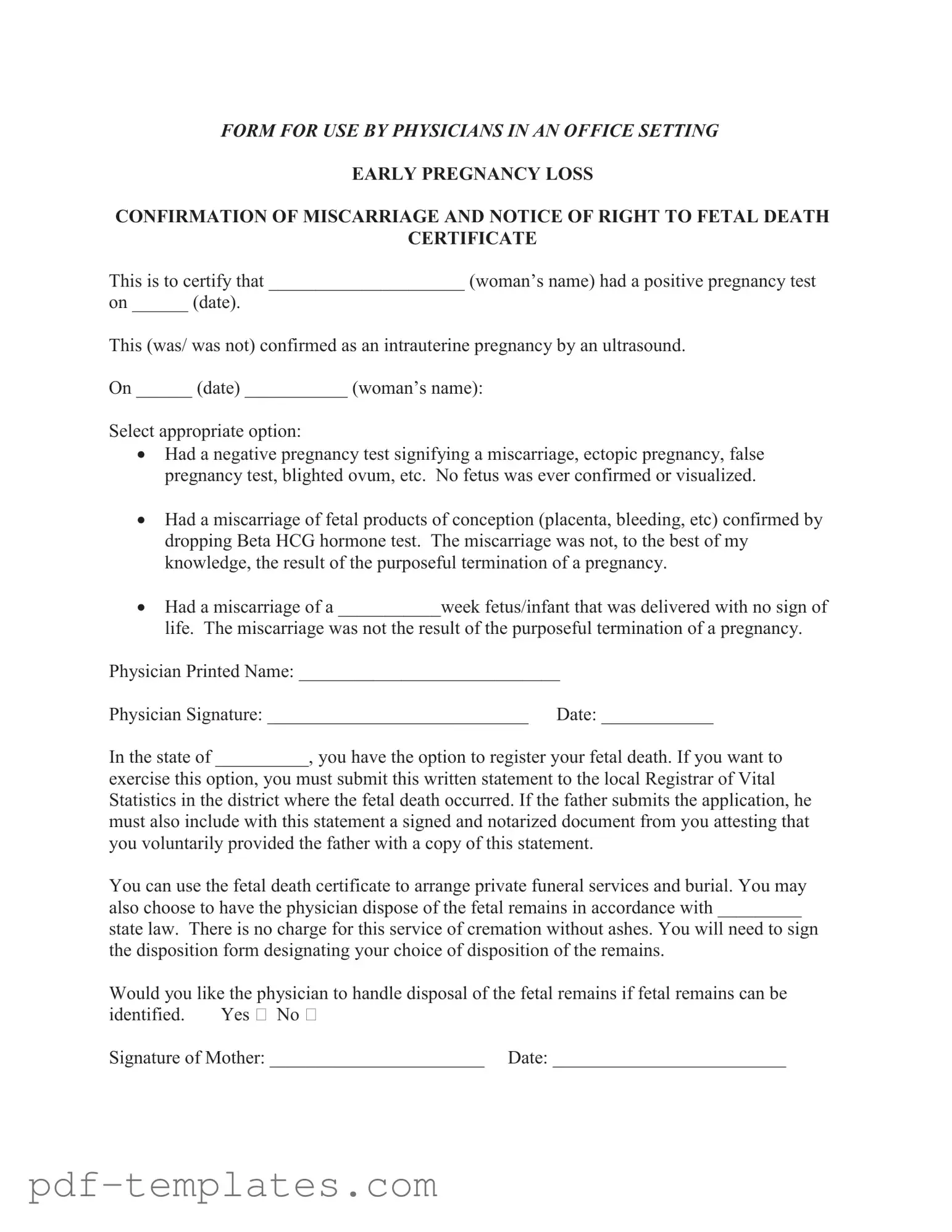The Miscarriage Discharge Paper form shares similarities with the Death Certificate. Both documents serve to officially recognize a loss. A Death Certificate is issued when an individual passes away, while the Miscarriage Discharge Paper provides a formal acknowledgment of a pregnancy loss. Each document includes vital information such as the name of the deceased or the woman involved, the date of the event, and the cause of death or loss. These documents can also be used for legal and administrative purposes, such as settling estates or arranging for burial services.
Another document similar to the Miscarriage Discharge Paper is the Medical Report. This report outlines the medical details surrounding a patient’s condition and treatment. Like the Miscarriage Discharge Paper, it is prepared by a physician and includes specific medical findings. Both documents serve as important records for patients and healthcare providers, ensuring that necessary information is accurately documented for future reference or follow-up care.
The Pregnancy Loss Certificate is another related document. This certificate specifically acknowledges the loss of a pregnancy, similar to the Miscarriage Discharge Paper. It often includes details about the pregnancy and the circumstances surrounding the loss. Both documents can provide emotional support to parents by formally recognizing their experience and can be used for memorial purposes.
The Authorization for Release of Medical Records is also akin to the Miscarriage Discharge Paper. This document allows patients to request their medical information from healthcare providers. Both documents require signatures and contain sensitive information about a patient's health history. They ensure that individuals have control over their medical records, which can be important for personal or legal reasons.
In the context of managing personal documentation, understanding the requirements for necessary forms is crucial, and one such important document is the California Identification Card form. This form serves as a key component for residents to apply for, renew, or replace their ID cards effectively. For those looking for comprehensive resources related to this, you can find useful information at All California Forms, which provides detailed instructions on eligibility and the application process.
The Fetal Death Certificate is directly comparable to the Miscarriage Discharge Paper. This certificate is specifically used to document a fetal death that occurs after a certain gestational age. Similar to the Miscarriage Discharge Paper, it is issued by a healthcare provider and serves to provide legal recognition of the loss. Both documents can be necessary for burial or cremation arrangements and may be required for registering the death with local authorities.
The Release of Liability form is another document that bears similarities. This form is used when a patient consents to a procedure or treatment, acknowledging the risks involved. Like the Miscarriage Discharge Paper, it requires a signature and serves to protect healthcare providers from legal claims. Both documents emphasize the importance of informed consent and patient autonomy in medical situations.
The Consent for Treatment form is also comparable. This document is used when a patient agrees to undergo a specific medical procedure or treatment. Both the Consent for Treatment and the Miscarriage Discharge Paper involve a physician's role in providing information and obtaining a patient’s agreement. They highlight the necessity of clear communication between healthcare providers and patients regarding medical decisions.
Finally, the Referral Letter can be seen as similar to the Miscarriage Discharge Paper. A referral letter is issued by a healthcare provider to recommend a patient to another specialist. Both documents involve communication from a physician and provide essential information about a patient’s medical history. They ensure continuity of care and support patients in navigating their healthcare journey.
